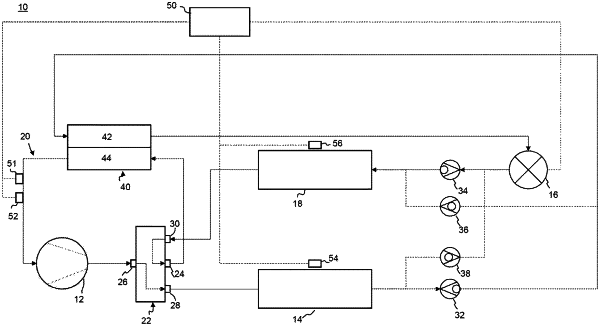| CPC F25B 41/31 (2021.01) [F25B 13/00 (2013.01); F25B 40/06 (2013.01); F25B 2600/21 (2013.01); F25B 2600/2513 (2013.01)] | 1 Claim |

|
1. A computer-implemented method comprising:
simulating operation of a plurality of models of a heat pump, the heat pump comprising:
a flow path for a vapor compression cycle, the flow path extending through components of the heat pump including, in flow order: a compressor, a condenser, a liquid line pathway, an expansion valve, an evaporator, and a suction line pathway to the compressor; and
an internal heat exchanger configured to transfer heat from refrigerant in the liquid line pathway to refrigerant in the suction line pathway, to superheat the refrigerant upstream of the compressor;
wherein the simulation controls a modelled flow of refrigerant through the expansion valve to maintain a target superheat at a control location of the flow path;
wherein the plurality of models is defined to evaluate a performance parameter of the heat pump as a dependent variable, based on variation of the target superheat as an independent variable;
for each of a plurality of operating conditions of the heat pump, determining an optimum target superheat for the heat pump based on a comparison of the performance parameter across each of a respective plurality of the models; and
wherein the plurality of models are defined to evaluate the performance parameter of the heat pump as a dependent variable, based on variation of:
the target superheat as a first independent variable;
a property of the internal heat exchanger as a second independent variable;
wherein simulated heat transfer at the internal heat exchanger is a function of the property of the internal heat exchanger;
wherein the property of the internal heat exchanger is selected from or determines a property in the group consisting of:
a size of a heat transfer area of the internal heat exchanger;
a cross-sectional area of a path through the internal heat exchanger;
a length of a path through the internal heat exchanger;
a refrigerant pressure drop through the internal heat exchanger;
a number of passes of a path through the internal heat exchanger;
a parameter relating to a surface of a heat transfer area of the internal heat exchanger.
|